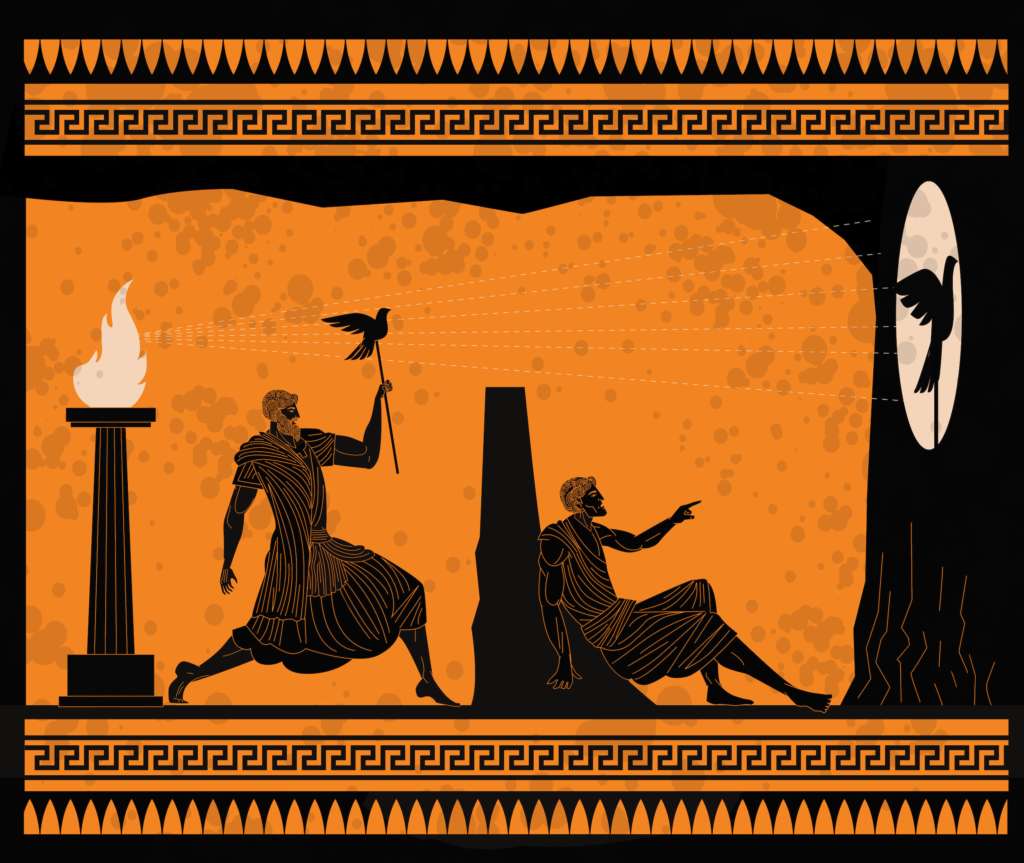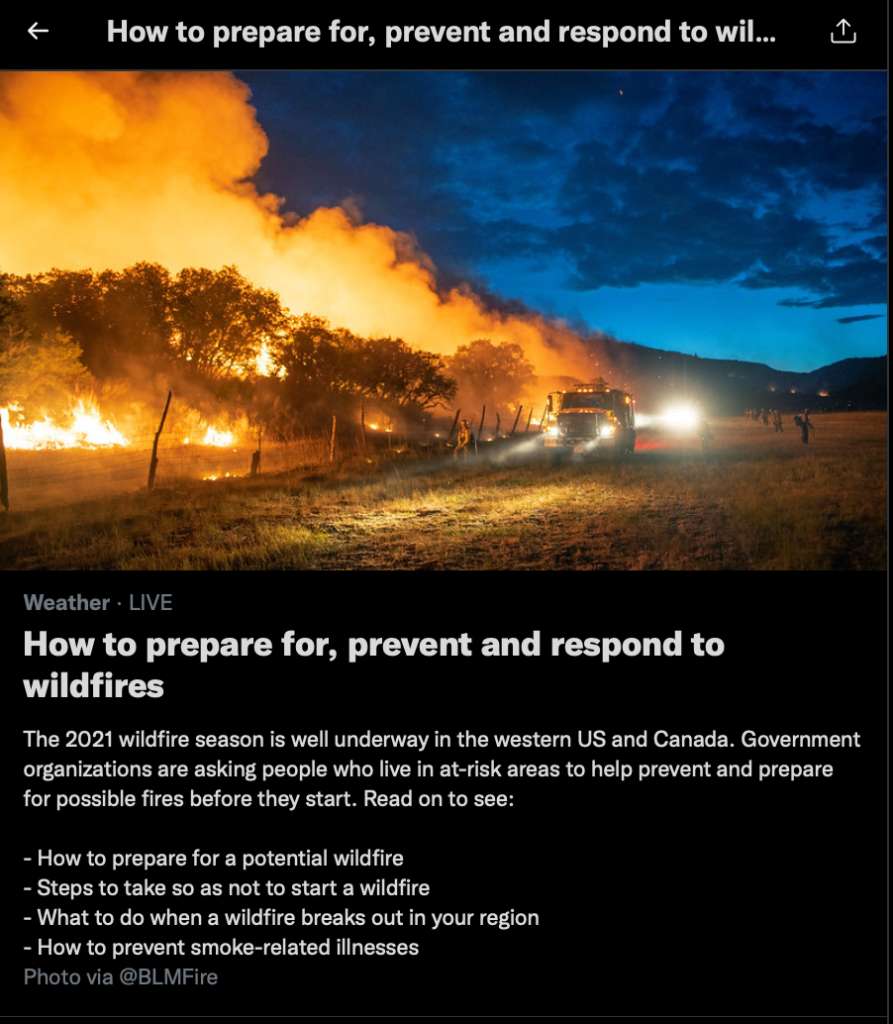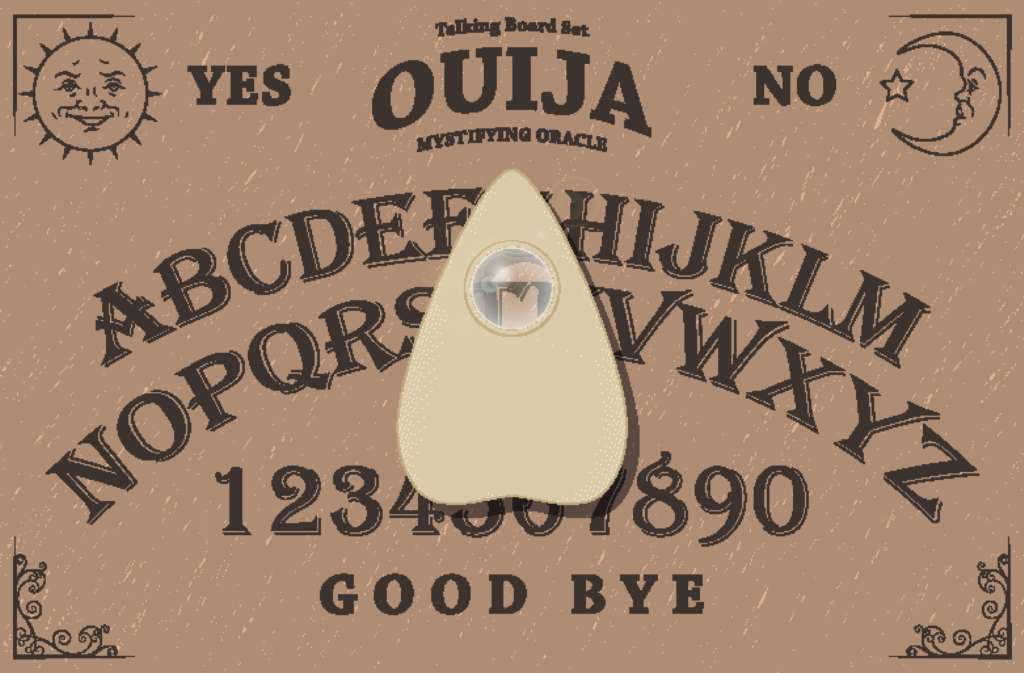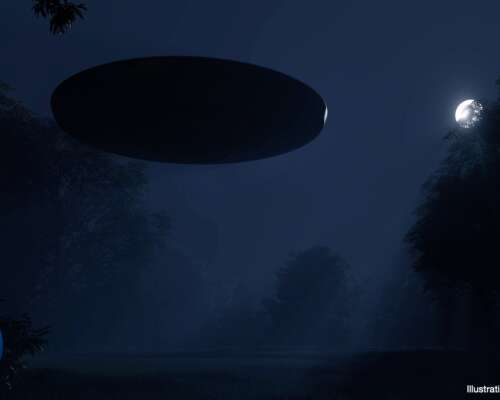“There are more things in heaven and earth, Horatio, then are dreamt of in your philosophy.”
–Hamlet, Act I, Scene V

In the quote above, as Hamlet feigns madness, Hamlet informs his friend Horatio that there is more afoot than meets the eye, and that Horatio should not be so quick to judge or come to a hasty conclusion until he has all the facts.
Check out the iceberg in the 3D representation to the right. Notice how the smallest bit of ice is visible and above the waterline, while the bulk of the ice is below the surface of the water and is in reality, normally not visible. Sailors have no idea of the size of an iceberg when they see it, so they do all they can to avoid it.
Sigmund Freud used the metaphor of an iceberg to compare the human mind to in a meaningful way. It’s been said that: “the small amount of iceberg above the surface represents the conscious mind; the huge mass below the surface, the unconscious mind. The unconscious mind holds all awareness that is not presently in the conscious mind. All memories, feelings and thoughts that are out of conscious awareness are by definition ‘unconscious.’ It is also called the subconscious and is known as the dreaming mind or deep mind.”
The hidden parts of the mind deal with intuition, déjà vu, the racial memory that Jung spoke of, mystical experiences and subjective revelations. This is where Hamlet’s undiscovered country (Act 3, Scene I) can be accessed (but you won’t find this country on any map.) And despite our technology, our artificial intelligence advances, and our numerous discoveries, we still haven’t even begun to tap into that part of our mind that is below the waterline.
So it is with our understanding. We know only a fraction of what exists. Using the Web, I can quickly tell you the current surface temperature on Mars, give you the GPS coordinates of a dozen sharks swiming off the eastern coast of the U.S., and take you on a virtual tour of the wreck of Titanic. But I can’t tell you why in the vaccum of space there is noise, or why monozygotic twins often share the same dream while sleeping or how proteins are transported through the Golgi apparatus in the cell. In fact, no one knows the answers to these questions.
In this post I’d like to describe the three distinct but occasionally overlapping domains; the physical world, the metaphysical world and the supernatural world.
The physical world
The physical world is what high school students study when they take Earth Science. Geology, oceanography and meteorology are typically included in the course, and perhaps geography as well. But that is just where the physical world begins. We have the flora and fauna that live on our planet. Humans are the dominant lifeform on Earth and we’ve created civilizations, cities, hospitals and so on, so the fields of sociology, engineering, medicine form part of the physical world, along with cybernetics, robotics and anything else we might develop.
The natural man
The physical world we know is not the same as God created it. It is fallen, and people (and presumably animals) suffer in ways they were never intended to. As splendid as a warm summer day at the beach is with a fresh ocean breeze, or a walk in the woods in autumn, they cannot compare to what they once were or might have been. We, as creatures of the natural world are born into this life as natural men and women. The “natural man” (ψυχικὸς ἄνθρωπος ) is the term Paul uses in I Corinthians 2:14 when he writes “But the natural man receiveth not the things of the Spirit of God: for they are foolishness unto him: neither can he know them, because they are spiritually discerned.” In this passage, is a human “who has an unchanged nature, and a man who only lives but has not received the Holy Spirit” (Grosheide, 1984; Grudem, 1994; Erickson, 1998). It means the unbeliever (See also Jee, Sang-hoon.) The root of Ψυχικὸς “expresses the limitations and vulnerabilities of human existence” (Bromley:1284). Gill sums it up: “Every man in a state of nature, who is as he was born, whatever may be the inward furniture of his mind, or his outward conduct of life, is but a natural man, and such an one” (Gill’s Exposition of the entire Bible.) This natural man is criticized elsewhere in the New Testament by Jude and others, but in the context of this verse alone, there is no good or evil context attached to the word. You might as well be talking about a cat or a chair. And ἄνθρωπος (anthropos) refers to the species, as in mankind, and not to men as a sex. Thus, it applies equally to women as well.
“There are more things in Heaven and Earth, Horatio, then are dreamt of in your philosophy.”
Hamlet, Act I, Scene V
Plato’s Cave

Illustration of Plato’s cave courtesy of delcarmat (Shutterstock)
Let’s transition to the metaphysical world. The metaphysical world involves a deeper, heigthened view of the physical world. I’m going to hijack an allegory used by Plato. This may be familiar to many of you from your college days. What I will do is simplify the scenario and change the meaning a tiny bit as far as what is represented.
In Plato’s cave, you have half a dozen or so people who are chained facing a wall in a cave. In the illustration above, there is only one person who is seated, but there are more than one according to Plato (and that is important.) Behind these people who are chained so that they can only observe the wall in front of them, you have a source of light (in this case, a fire.) Between the fire and the people in chains, you have objects (I think Plato called them “puppets,” but no matter. They could be real people, books, brightly-colored peacocks or parrots, a large mechanical clock with the clockworks exposed, whatever.) The people in chains are aware of these objects, but only indirectly as shadows on the wall of the cave. They cannot see the colors of the parrots, they cannot see the components of the clock or the identity of the people because they cannot turn their heads away from the wall of the cave. It is physically impossiblefor them to do so. This, then, is the only reality that the six people know, and they are satisfied with it because they know of no other reality. These are natural men. There are neighter good nor bad. They accept their reality without questioning it.
However, one man breaks free, wheels around and see actual objects that casts the shadows. He sees colors and detail much better than before, and when this liberated person steps out of the cave into the sunlight, it is positively dazzling. This is the equivalent of a born again experience (at least it is to him.) We still don’t see or understand perfectly when we convert, but we know there is a heck of a lot more to life that we’ve been missing. So, the liberated person tries to tell his remaining friends who are still in chains about his exciting discovery, but they are not interested.
“As the life of the cave disables the prisoners from seeing reality, there is no way but to drag him from his surroundings into the light. The chains, the steep and hard way up, and the struggle all typify the resistance of formed psychical dispositions and the institution that has molded them.”
Ferguson
Plato says that if one of the others were freed, they might well insist that the shadows are the actual reality, instead of just a hint of what is truly real. What we’re doing in some sense now is transitioning from the natural world to the metaphysical world, though I do not want to suggest that you must be a born-again Christian to appreciate the metaphysical world. The value of this allegory is two-fold: (1) We cannot truly understand everything in the natural world because our senses are limited and constrained and (2) our senses can distort reality in some instances.
The metaphysical world
Metaphysics is philosophical and occasionally theological, or even mathematical. I understand that it is called “meta physics” (literally “after physics”) because Aristotle filed his works on this subject after his volumes on physics in his library. Metaphysics is concerned with explaining the fundamental nature of the world, particularly things that are theoretical at the moment or things that can only be observed indirectly or with special instruments or special training (e.g. “forbidden” or “impossible” colors.)
We see a hint of metaphysics in Plato’s Cave where the view went from shadown to substance. Many of the concepts in the metaphysical world are philosophical, such as our existence, itself, and consciousness, while others are also perhaps more properly in the domain of physics (e.g. space and time) and quantum physics (e.g. Brane Theory and multiverses.)
Here is something that might make the metaphysical world criteria. The sound of wind blowing on Mars and the atmosphere on Titan, Saturn’s largest moon. Much of the metaphysical world is obscure, but let’s look at some concepts.

Multiverse: There is the current theory that there are many different “universes” in existence, and each may have its own peculiar laws that are completely different than ours, including cause in effect. We believe that John Booth (the cause) shot and killed President Lincoln (the effect.) But suppose Lincoln was “fated to die as the hands of an assassin.” Might that “cause” create a killer out of Booth? According to quantum theory, it might. And this is actually an ancient idea. Cosmic inflation (the expanding unuverse) is one reason people believe in multiverses, as well as quantum mechanics which provides for the “many worlds” theory. This theory states that every possible outcome for every possible scenario occurs somewhere “out there.” If you choose to wear blue socks tomorrow, another “you” will be wearing yellow socks, another red socks, another black socks, etc. A multiverse does not discredit the hand of God in the process. Forbes has a good article on this subject here.
String theory: String theory is a theory that says that the universe is comprised of vibrating strings. While it was pioneered for another purpose (to produce a unified theory of gravity and particle physics), it opened the door to to the possibility of extra dimensions beyond the four that we know of. A good, easy to understand video about this can be found on a TED Talk at this link.
Multi dimensions: We have four agreed on dimensions; up and down, left and right, back and forth or HxWxL if applied to a box. The fourth dimension used to be referred to as space/time, but now just “time.” If you’ve watched the TED Talk, you know that there hypothetically can be an additional seven dimensions that we don’t know about (or even more than that.)
Parallel (alternative) universes:
In a sense, this is a “scaled down” version of the multiverse concept, but it doesn’t have to be. Meet Schrödinger’s cat. In 1935, Erwin Schrödinger undertook an academic exercise where he “placed” a cat in a sealed bell jar. A geiger counter was hooked up to a device that released deadly cyanide into the glass if a radioactive particle activated the geiger counter. An isotobe with a 50/50 chance of emitting a radioactive particle was used. If the isotobe emitted a radioactive particle, then cat died in the established time frame (say, an hour.) If not, then the cat lived.

Until the cat is observed sixty minutes later, the cat is neither dead not alive. Schrödinger initially resisted the notion that the cat could be both alive and dead, but eventually he actually embraced the notion. In this experiment, the cat is both dead and alive, but in different universes that cannot interact with each other. The same cat, but in two completely different states of being.) In fact, the person who observes the fate of the cat after an hour is also “split” into two worlds: One where he observes a live cat and another where he observes a dead cat. But it’s the same observer and the same cat. This goes back to my definition of multiverse where I wrote quantum “theory states that every possible outcome for every possible scenario occurs somewhere “out there.” If you choose to wear blue socks tomorrow, another “you” will be wearing yellow socks, another red socks, another black socks, etc.”
According to quantum theory, nothing truly happens unless it is observed. In that case, who was around to observe the Big Bang? The answer is God.
Other metaphysical questions deal with consciousness, cause and effect, time, and free-will. You may be familiar with some of these concepts from university if you took philosophy courses.
The Supernatural World
The supernatural world is not easily accessible to most people. Like the people in Plato’s Cave, they are oblivious to it. The most common inhabitants of the supernatural world are “good guys” like angels and other heavenly creatures such as those described by Ezekiel, and the cherubim and seraphim. Angels can exist as spirit and appear as persons, so they are able to
“A strange and memorable thing. After outpourings of prayer, with the utmost fervor and fasting, there appeared an Angel, whose face shone like the noonday sun. His features were those of a man, and beardless; his head encircled by a splendid tiara; on his shoulders were wings; his garments were white and shining; his robe reached to his ankles; and about his loins was a belt not unlike the girdles of the peoples of the East.”
Cotton Mather quoted in Elizabeth Reis, Common place, the journal of early american life
move freely back and forth between the two domains. When in this domain, they have bodies (Jacob wrestled with one), but they are not necessarily constrained by the laws of nature when on earth. Then, there are the “bad guys.” These “bad guys” include the principalities and powers and the hierachy that Pauls speaks about in Ephesians 6:12ff who are probably in this domain as well, when not in the natural world. Jesus says in Matthew 12:43 that by default, demons dwell in “waterless places” until they can find another host. There is no reason not to take what Jesus says here literally.
Popular supernatural creatures in our culture (werewolves, vampires Näkki and such) did not/do not exist. Psychic phenomenon such as ghosts and hauntings would be included here. Speaking of ghosts, noted British historian and author John Guy hypothesizes “Ghosts may not be the spirits of dead people from this world. Perhaps they are beings from a parallel world or just natural phenomena since they don’t typically interact with their surrounding. They are not normally visible to our human senses but occasionally we may catch a glimpse of them (Guy:21)” In fact, ghosts are not the spirits of dead people but, instead, demons who merely impersonate them.
Skogsrå in Sweden are seductive appearing women who lure men into forests where they become disoriented, never to be seen again. They may have some scant basis in reality as well as fairies, but one hears very little of these anymore, so it is quite possible they are vestiges of the middle ages.
Perhaps “close encounters” are part of the supernatural world as well, unless it can eventually be proved at some point in the future that we are being visited by extraterrestrials. So called elemental spirits are part of the supernatural world as well, if they exisit, and if they are actually endowed with any abilities (see the Skogsrå, above.) Some charismatics today believe that elemental spirits do exist, and they may cause harm to people. However, Scripture is silent here. Yet, if fairies and other legendary creatures exist, they suffer the same consequences of the Fall, and that “at the name of Jesus every knee should bow, of those in heaven, and of those on earth, and of those under the earth, and that every tongue should confess that Jesus Christ is Lord, to the glory of God the Father” (Philippians 2:10-11.)
Fortune tellers
Psychics who tell fortunes, astrologers, numerologists, palmists and others tap into the supernatural world for help. Many, if not most, are frauds, but there are a rare few who generally are not. Christians are admonished to avoid astrologers as well as mediums.
The Vast of the Night

The first person I ever witnessed to and was used by God to lead him to the Lord had a problem with demons. Speaking using the first personal pronoun and referring to the individual I was praying with in the third person, they tried to keep him from asking Jesus into his life, demanding to me that I stop saying “that name” (Jesus.). They insisted that I go away and leave the man alone; they promised that they would not hurt him if I did so. Demons have personalities like people have. Some are entertaining, some crabby, some humorous, some vicious. But then, the point is not for the Christian to be entertained by them or yuk it up with them. Nor to ask them questions about their circumstances or origins because, they will lie and try to entrap you. There is no ritual involved here, no crucifix to thrust in front of the person, no holy water, no 360 degree head swivels. Just a tête-à-tête with another created being in a confrontation where He who is in you is greater than he who is in the world (I John 4:4.) They are particularly agitated at verses dealing with the Cross, Colossians 2:15, I John 3:8 and so on.
“Another makes me nod when I drive the car1“
What I hope the previous paragraph suggests is that one needs to be careful when dealing with inhabitants of the supernatural world. I understand that some Christians have developed entire hierarchies and constructs (strongholds) based on what demons have told them, or what they’ve read in popular books of fiction, and I think if what they are doing is what I understand it to be, then it is folly. All we really have is Scripture that we can depend on.
People that try to communicate with the dead (the inhabitants of that undiscovered country mentioned above) are, in fact, communicating with familiar spirits and not their dead relatives. Whether these spirits are demons or something else is a question I don’t have the answer to, and I’ve been involved in more seances before becomng a Christian than I can remember. I tend to support the conventional wisdom (back to the early Church fathers) that demons are disembodied spirits who seek gratification when pestering (possessing or oppressing) humans (e.g., a spirit of gluttony enjoys it when the person they are involved with overeats; a spirit of hatred uses the person they are hooked up with to forment hate), but I can’t prove their origin, and my faith does not depend on it.
I’m also not a fan of Christians who say they have a ministry as exorcists. The supernatural world is like a hall of mirrors, and you can rapidly lose perspective and get disoriented if you spend too much time “there.” You start to feel like you’re being sucked into some alternate universe or abyss and you can lose your points of reference. If God wants you to minister to someone who is oppressed, then He’ll show you what needs to be done and provide you with whatever grace you’ll require. I got a rush the first time I was involved with deliverance, but my spiritual mentor wisely warned me to calm down and not to let Satan create a supernatural appetite2 in me (See endnote.) Jesus rebuked His disciples for the same reason. I know of people who seek hidden knowledge from the books of Enoch, the Sibylline Oracles and what have you, and they quickly lose their way. Some things are not for us to know or some disaster may follow. The devil knows just what buttons to push when he deals with us. But he’s hardly on the same level with God. God is God. Satan is a created being.
Sometimes there is correspondence between the spiritual and the physical worlds. For example, a wildfire breaks out in the physical world by chance, perhaps a lightning strike or sparks from a passing railroad car, and some inhabitants of the spiritual world try to get a weak-minded person to start a fire of his own to add to the destruction and carnage. According to the story in the link above, the person accused of starting the Fawn Fire “…describes herself as a shaman – a person who claims to have a direct connection with the world’s good and evil spirits.” Her arrest occurred just after this post went live.

I don’t (can’t) know this for a fact, but I would not be surprized if some serial killers were inspired or manipulated by supernatural forces. Even some world leaders. However, if we know anything at all about the supernatural domain, it is that we don’t, in fact, know a lot at all. Nor should that be a problem. Neither should we want to know more.
Spiritual gifts
God works his spiritual gifts (I Corinthians 12) through the supernatural world. I’ll discuss them more in a future post.
In conclusion
There is much yet to discover in the natural world, including flora and fauna on our own planet, whether in the rain forests, in the depths of the oceans, or under the polar ice. Then, there’s the solar system, our galaxy, and the universe, itself. We may think we know a lot, but we know so very little at all, and that is the point of Hamlet’s quote to Horatio, and of this post. In Job 38, God says:
“Where were you when I laid the earth’s foundation?
Tell me, if you understand.
Who marked off its dimensions? Surely you know!
Who stretched a measuring line across it?
On what were its footings set,
or who laid its cornerstone—
while the morning stars sang together
and all the angels shouted for joy?
Who shut up the sea behind doors
when it burst forth from the womb,
when I made the clouds its garment
and wrapped it in thick darkness,
when I fixed limits for it
and set its doors and bars in place,
when I said, ‘This far you may come and no farther;
here is where your proud waves halt’?
Have you journeyed to the springs of the sea
or walked in the recesses of the deep?
Have the gates of death been shown to you?
Have you seen the gates of the deepest darkness
Have you comprehended the vast expanses of the earth?
Tell me, if you know all this.
What is the way to the abode of light?
And where does darkness reside?
Can you take them to their places?
Do you know the paths to their dwellings?
Surely you know, for you were already born!
You have lived so many years!
Have you entered the storehouses of the snow
or seen the storehouses of the hail,
which I reserve for times of trouble,
for days of war and battle?
What is the way to the place where the lightning is dispersed,
or the place where the east winds are scattered over the earth?
Who cuts a channel for the torrents of rain,
and a path for the thunderstorm,
to water a land where no one lives,
an uninhabited desert,
to satisfy a desolate wasteland
and make it sprout with grass?
Does the rain have a father?
Who fathers the drops of dew?
From whose womb comes the ice?
Who gives birth to the frost from the heavens
when the waters become hard as stone,
when the surface of the deep is frozen?
Can you bind the chains of the Pleiades?
Can you loosen Orion’s belt?
Can you bring forth the constellations in their seasons[c]
or lead out the Bear with its cubs?
Do you know the laws of the heavens?
Can you set up God’s dominion over the earth?
“Can you raise your voice to the clouds
and cover yourself with a flood of water?
Do you send the lightning bolts on their way?
Do they report to you, ‘Here we are’?
Who gives the ibis wisdom
or gives the rooster understanding?
Who has the wisdom to count the clouds?
Who can tip over the water jars of the heavens
and the clods of earth stick together?
Job: 38: 4-11; 16-38
As creatures in the natural world, we’ve been hardwired with certain precepts and follow what is commonly called “natural law.” To that, we have added positive law because society today is so complex.
Our understanding of the the metaphysical world is growing by leaps and bounds, but there is so much more to learn, and much of what we hypothesize is theoretical. We’re mere infants in our grasp and understanding of these fundamentals.

Then there is the supernatural world. Keep your children away from Ouija boards. Just as fruit flavored, alcoholic drinks are “gateway drugs” to something stronger down the road, Ouija boards can cause serious problems for your children. Using a Ouija board gives certain spirits an excuse–and possibly some legal supernatural right–to hang out in your home. “Squatters rights” in some spiritual sense, perhaps.
Endnotes
1 From lyrics of song “Tiny Demons” by Todd Rundgren.
2An appetite for the supernatural is exactly what Satan has been creating in our culture. I remember when the only television show with a remotely supernatural underpinning was “The Munsters,” a comedy about a Frankenstein-like father and his dysfunctional family. Now, there are dozens (perhaps much more) of shows and movies from which to chose. Fans of “Buffy,” the Walking Dead and the “Twilight” movies may say that it’s just entertainment, but underneath the thrills, romance and drama, their hearts are unknowingly being hardened to God.
Citations
Dingeldein, Laura B. “Ὅτι Πνευματιϰῶς Ἀναϰρίνεται’: Examining Translations of 1 Corinthians 2:14.” Novum Testamentum, vol. 55, no. 1, 2013, pp. 31–44. JSTOR, www.jstor.org/stable/24735766. Accessed 14 Aug. 2021.
Ferguson, A. S. “Plato’s Simile of Light. Part II. The Allegory of the Cave (Continued).” The Classical Quarterly, vol. 16, no. 1, 1922, pp. 15–28. JSTOR, www.jstor.org/stable/636164. Accessed 14 Aug. 2021.
Guy, John. Ghosts. Unexplained Series. Irvine: Saddleback Publishing, 2010. Print.
Catalyst ISSN 2408-137X, Volume 15, No. 1, 2017 A Critical Evaluation of Trichotomism: A Response to Biblical References for Trichotomism (Sang-hoon Jee)



